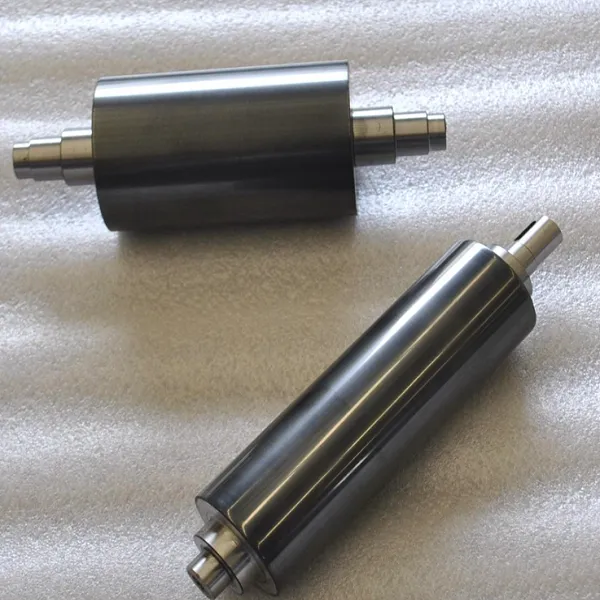views
There are two main problems in the development of textile machinery: one is the low operating speed of the textile machinery equipment, and the other is the high average energy consumption of the equipment. In order to further reduce energy consumption and improve production efficiency, textile machinery and equipment have begun to gradually use carbon fiber materials in their parts. Carbon fiber is light in weight, but has a large specific strength. It is an ideal material for light weight of medium and high-end machinery and equipment. The following is a brief introduction to several forms of carbon fiber applications in current textile machinery.
Shuttle and arrow shaft
Shuttles and arrow shafts are the earlier forms of carbon fiber materials used in textile machinery. The wooden shuttle rod weighs 1.2kg each, while the weight of the carbon fiber rod is only 0.1kg; the frequency of the wooden shuttle is about 120-130 beats/min, and the frequency of the carbon fiber rod can be at least doubled; The service life is only 6 months, and the service life of the carbon fiber material rod is as long as 6-8 years.
Carbon fiber heald frame and winding core
With the shuttleless loom, the number of revolutions increases, the width of the fabric becomes wider, and the production efficiency is significantly improved. In the spray hole chamber, the rotation speed is 1700 rpm and the beam width is 2m. In order to suppress the deformation of the long beam, the heald frame adopts a lightweight, high-rigidity carbon fiber material. The winding core of the loom winder is usually a steel tube. After the paper tube is inserted, small protrusions will be generated when air pressure is applied, which becomes a structure for fixing the paper tube, but the disadvantage is that it is heavy. After replacing it with a carbon fiber tube, the weight is much reduced, and it is much easier to insert it into a straight tube, whether it is the installation of the loom or the manual operation of removing from the rolled fabric.
Carbon fiber reinforced nylon gear
The gears used in traditional textile machinery equipment are mainly pure nylon gears. Due to low strength, poor fatigue resistance, short service life and high maintenance costs, transmission gears made of carbon fiber reinforced nylon have strong conductivity and good anti-static effect. The conductivity of iron castings can also effectively prevent the generation of static electricity and reduce the probability of accidents such as fires. It has high strength, good toughness, and its tensile strength is close to the yield strength, and it has strong energy absorption capacity to impact, stress and vibration; Good grinding and self-lubricating effect, reduce oil pollution, good fatigue resistance, and double the service life; light weight, low noise, 30% lower noise than cast iron gears, 20% lower energy consumption, corrosion resistance, and resistance to gasoline and grease , Alcohol, weak alkali, etc.
Carbon fiber roller
As one of the main operating parts of textile machinery, roller has a great influence on the overall equipment performance of textile machinery, and has a direct effect on the quality and stability of the product. Traditional textile machine rollers are mostly made of steel. The weight of steel rollers is large and the equipment energy consumption is high. In order to meet the demand for speed increase, the wall thickness must be continuously increased, which causes a series of drawbacks. The use of carbon fiber rollers can simultaneously meet multiple requirements such as light weight, fast speed, good rigidity, small deformation, and low energy consumption.
The specific performance of carbon fiber roller is as follows:
Light weight and low energy consumption greatly shorten the startup and shutdown time. The roller made of carbon fiber material can reduce the weight by 35-70%, because the self-weight becomes smaller, the energy consumption required for the operation of the machine is greatly reduced, the operation speed is doubled, and the production efficiency is greatly improved.

The rigidity is good, allowing the expansion of the width, so that the textile machinery can adapt to the needs of modern production. In the past, the width of textile machinery and equipment would be limited by the length of the roll, because the longer the roll, the heavier the weight. When the length of the metal roll is too long, slight deformation will occur, and then gradually evolve into severe deformation, and when the weight of the roll body is too heavy, It will also affect the operating speed of the machine. The lightweight carbon fiber material effectively offsets the negative effects of length extension, and the good rigidity ensures that the roll body is not easily deformed.
The flexural modulus is large. In the event of a machine failure such as instantaneous rolling, it can rely on its own impact absorption capacity and produce instantaneous elastic deformation, and quickly restore the original state after the failure is eliminated, reducing maintenance costs and extending effective working time.
The above are just a few of the more mature and mature forms of carbon fiber materials used in textile machinery. In fact, like many industrial machinery and equipment, the application of carbon fiber materials is still the "tip of the iceberg." With the in-depth application of light-weight, high-strength carbon fiber materials, it will forcefully promote textile machinery and equipment to continue to advance in the direction of low cost, low energy consumption and high efficiency.
Wuxi Coreco specializes in the production and customization of various types of carbon fiber rollers, which can be used in textiles, printing, film industry, lithium batteries and other industries. The products can be customized according to customer needs and provide customers with the best service. We look forward to your contact!











